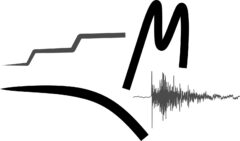The MARACAS ANR project has a high potential in generating new data in a wide region, along the Northern Andean margin. The project focus on the long-term deformation pattern, which will bring new insights on the relationship between upper plate deformation and the mechanical properties of the plate interface and on seismic hazard assessment.
A major scientific and societal challenge with strong economic stakes is to contribute to a better assessment of the coastal seismic hazard in subduction zones. Worldwide, large megathrust earthquakes are generated along the shallow portion of a subduction interface, right below the densely populated coasts. The magnitude of an earthquake correlates with the rupture surface that, in turn, highly depends on the lateral variations of the interseismic coupling coefficient (ISC1) along the plate interface. Highly coupled segments of subduction are considerated prone to produce large earthquake while creeping portion are not. When no ISC model exist on an area, only historical records of earthquakes, if any, can inform on the coastal seismic hazard. Therefore, a key parameter to assess seismic hazard in subduction zone is to correctly evaluate how the plate interface is segmented and what mechanical behavior govern each segment and inter-segment.
